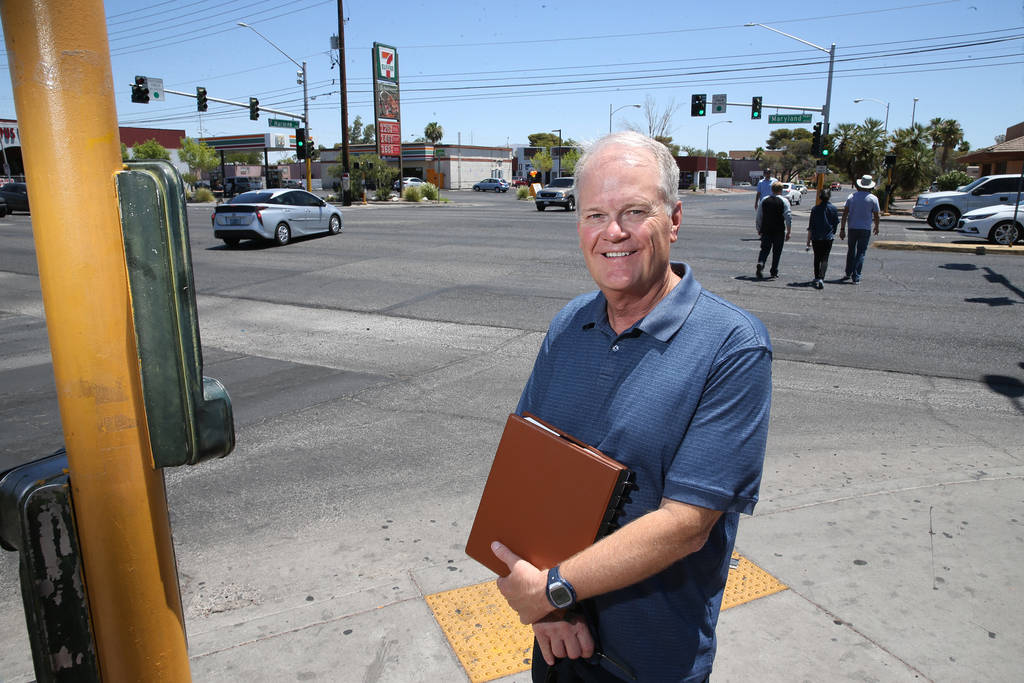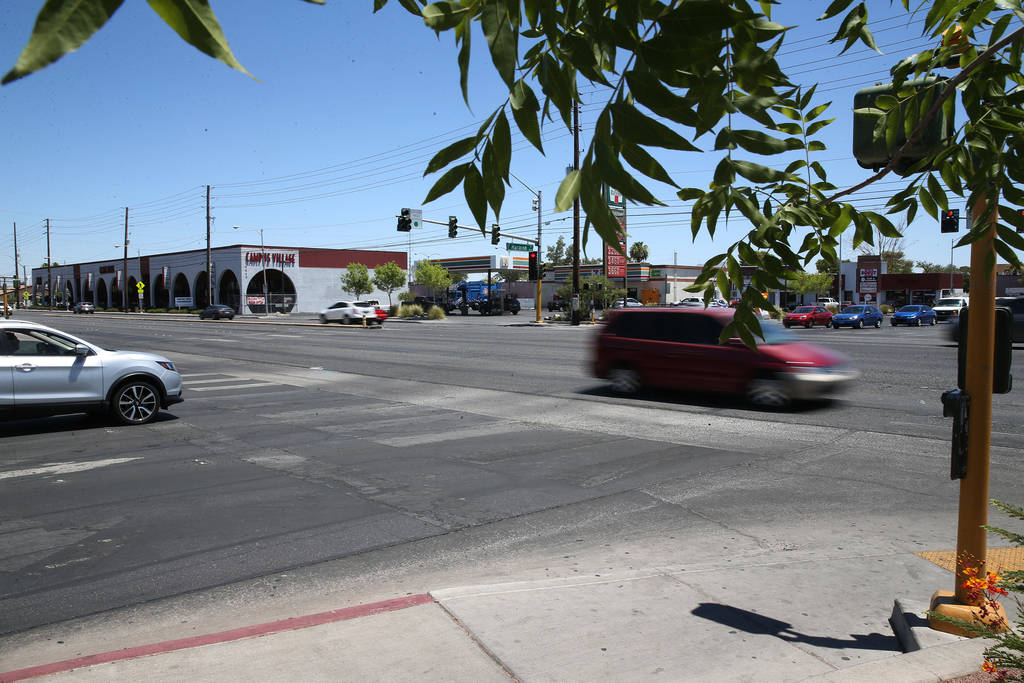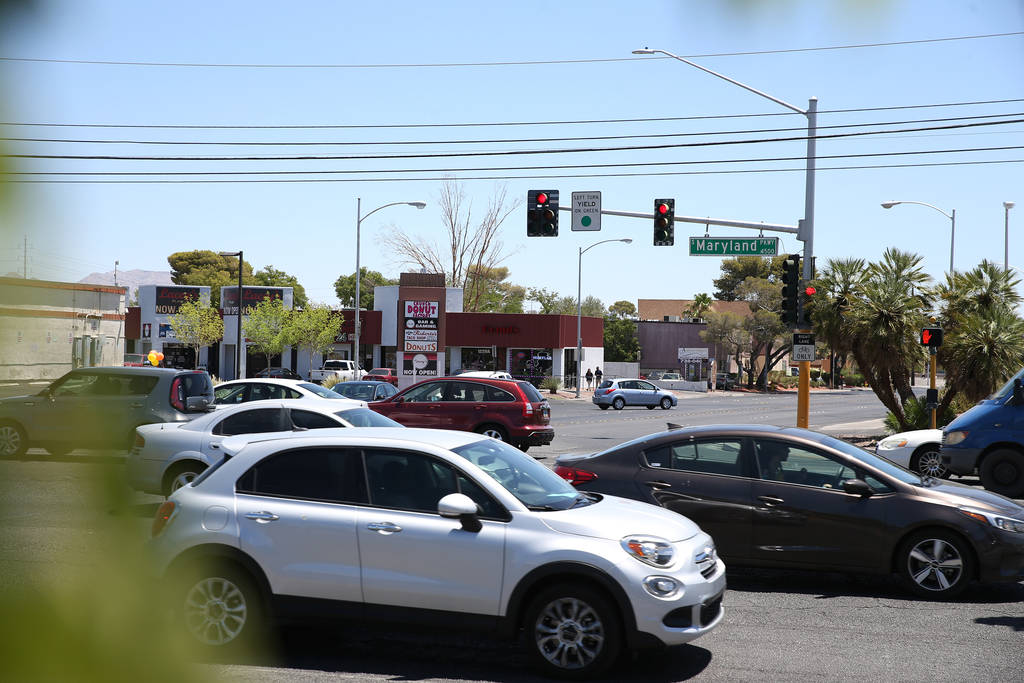UNLV professor studies the risks of distracted walking
The difference between distracted driving and distracted walking? One is a well-known, dangerous behavior that everybody agrees should be avoided. The other is a potentially harmful behavior that most of us barely think about.
But Tim Bungum does. The professor in UNLV’s School of Community Health Sciences has studied distracted driving and its bipedal counterpart, and while distracted walking may not yet receive the research attention distracted driving does, Bungum suspects it will as the gaggle of gizmos we embrace continues to multiply.
Walking while distracted — be it by conversing, eating, drinking, listening to music, texting or checking email or social media — can make us too preoccupied to notice an oncoming car, a curb, a person or a random object in our path. The consequences can include embarrassment, a painful injury or, in the case of a pedestrian-motor vehicle encounter, death.
For a study published in 2005, Bungum and his co-researchers observed 866 pedestrians crossing Maryland Parkway in a crosswalk at Harmon Avenue, in front of the UNLV campus. They found that about 20 percent of crossers exhibited distracted behaviors.
This was a time when texting wasn’t nearly as pervasive as it is today, Bungum notes.
“We redid it last year at the same site, and, surprisingly, about the same number of people, about 20 percent, were distracted, but the modes of distraction had changed and now, predominantly it was texting,” he says.
As part of a public education campaign unveiled in 2015, the American Academy of Orthopaedic Surgeons noted that distracted walking can cause such everyday accidents as falling down stairs and tripping over curbs, resulting in cuts, bruises, sprains or fractures.
Dr. Claudette Lajam, a New York City orthopedic surgeon and academy spokeswoman, says awareness of the hazards associated with distracted walking has become more prevalent in recent years. Still, it’s difficult to pinpoint exactly how common distracted walking is, in part because walkers can be loath to admit it.
“Occasionally, I see people who have fallen down and hurt a knee or an ankle or an elbow or whatever, and they say, ‘I tripped and fell,’ ” Lajam says. “Seldom will someone come in and say, ‘I was looking at my cellphone and I tripped and fell.’ “
Dr. David Obert, an emergency medicine physician at University Medical Center of Southern Nevada, has seen such injuries as sprained ankles, broken legs, knee dislocations and wrist injuries among potential distracted walkers.
He’s also seen accidents in which people “trip down the escalator because they’re not looking around and not paying attention.”
“I think it happens, probably, more often than reported, and I think it’s probably a degree of embarrassment,” Obert says.
Why are we so distracted? “I think, to a certain extent, we think we should always be productive,” Bungum says.
So we multitask, even though we might not be as good at it as we think, says David Copeland, an associate professor of psychology at UNLV.
Copeland says multitasking isn’t difficult with simple, routine, relatively unchanging tasks — for example, tying your shoes while carrying on a phone conversation. Crossing a street is a different story, requiring “attention to the environment and processing input from cars, other people and sounds from horns.”
“Your cognitive attention is limited whenever we try to spread it too thin,” Copeland says.
In his study, Bungum suggests that distracted pedestrians might benefit from educational programs that emphasize using caution in crossing streets, similar to distracted driver programs.
In the meantime, be assured that you’re not fooling anybody, least of all your doctor. Even if patients who have suffered potential distracted walking-related accidents seldom admit it, Lajam says they’re easy to spot.
If a patient is “looking at their phone while they’re sitting in the examination room with me,” she says, “it’s not a huge deduction to make.”
Distracted walking survey
In 2015, the American Academy of Orthopaedic Surgeons unveiled a public education campaign about distracted walking. As part of that campaign, the academy surveyed 2,500 people nationally about their attitudes toward distracted walking.
According to the survey:
• 78 percent of respondents called distracted walking a “serious” issue. About 75 percent of respondents said other people walked distractedly, but just 29 percent said that they also do.
• 90 percent have seen people talking on the phone while walking; 37 percent said they also do.
• 88 percent have seen people conversing; 75 percent report doing it.
• 88 percent have seen others listening to music; 34 percent report doing it.
• 85 percent have seen others using smartphones; 28 percent report doing it.
• 64 percent have seen others “zoning out”; and 38 percent report doing it.
Source: American Academy of Orthopaedic Surgeons,
orthoinfo.org/DistractedPedestrians
Contact John Przybys at jprzybys @reviewjournal.com or 702-383-0280. Follow @JJPrzybys on Twitter.



























